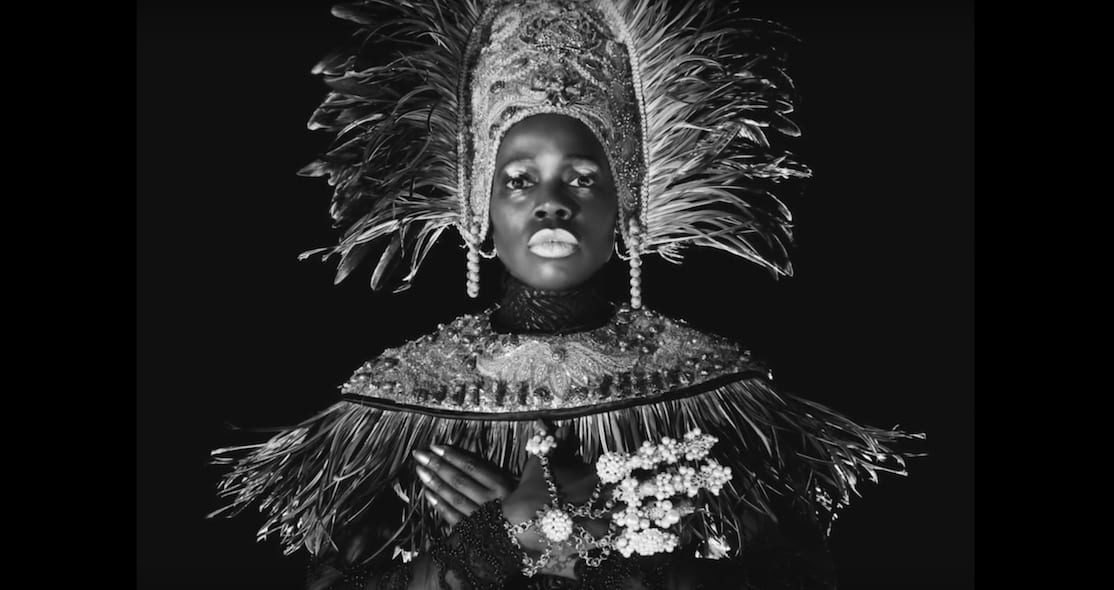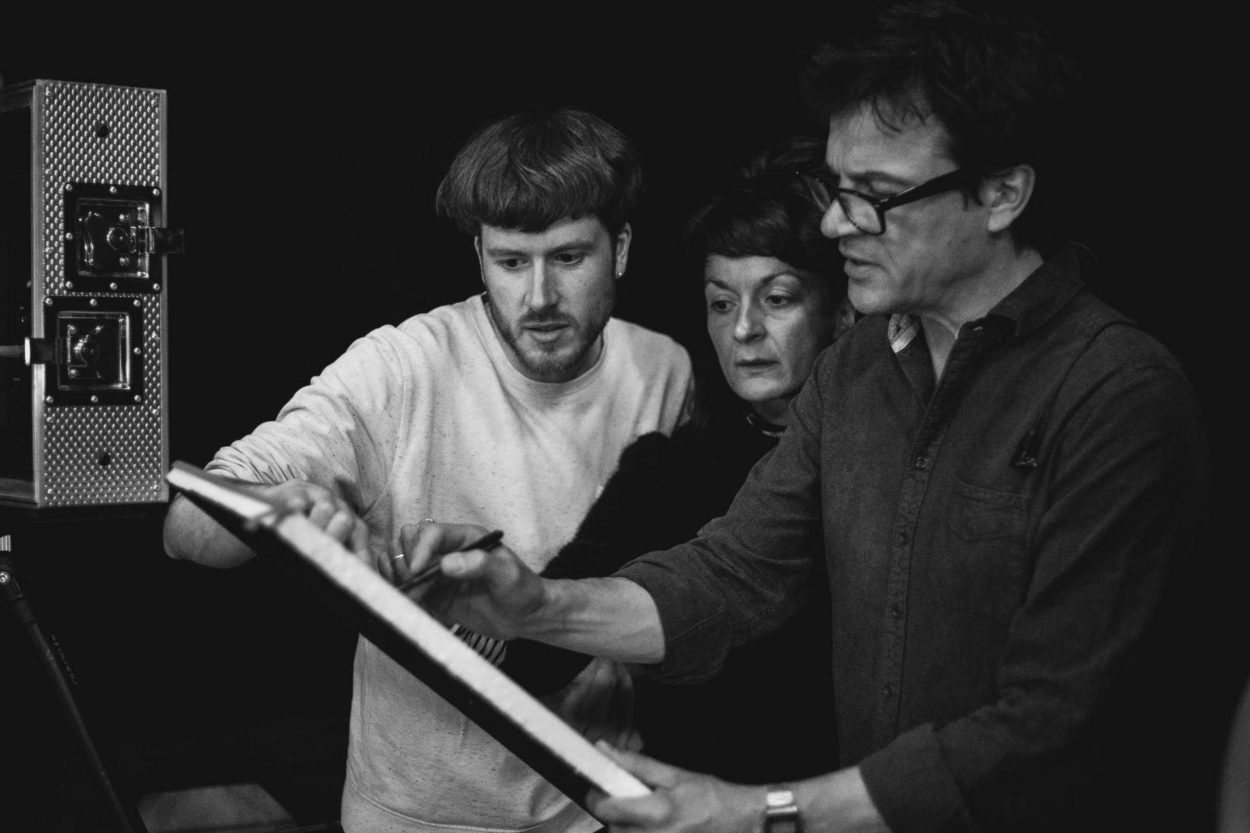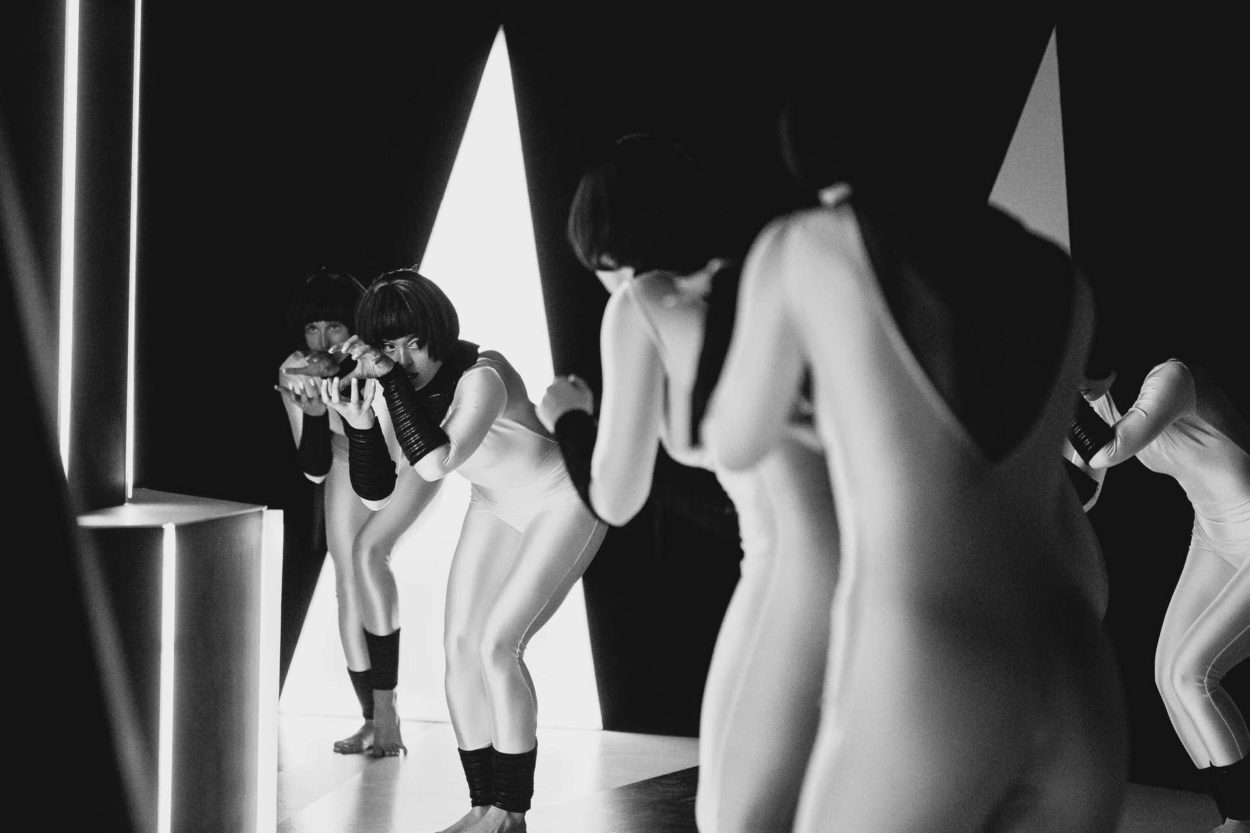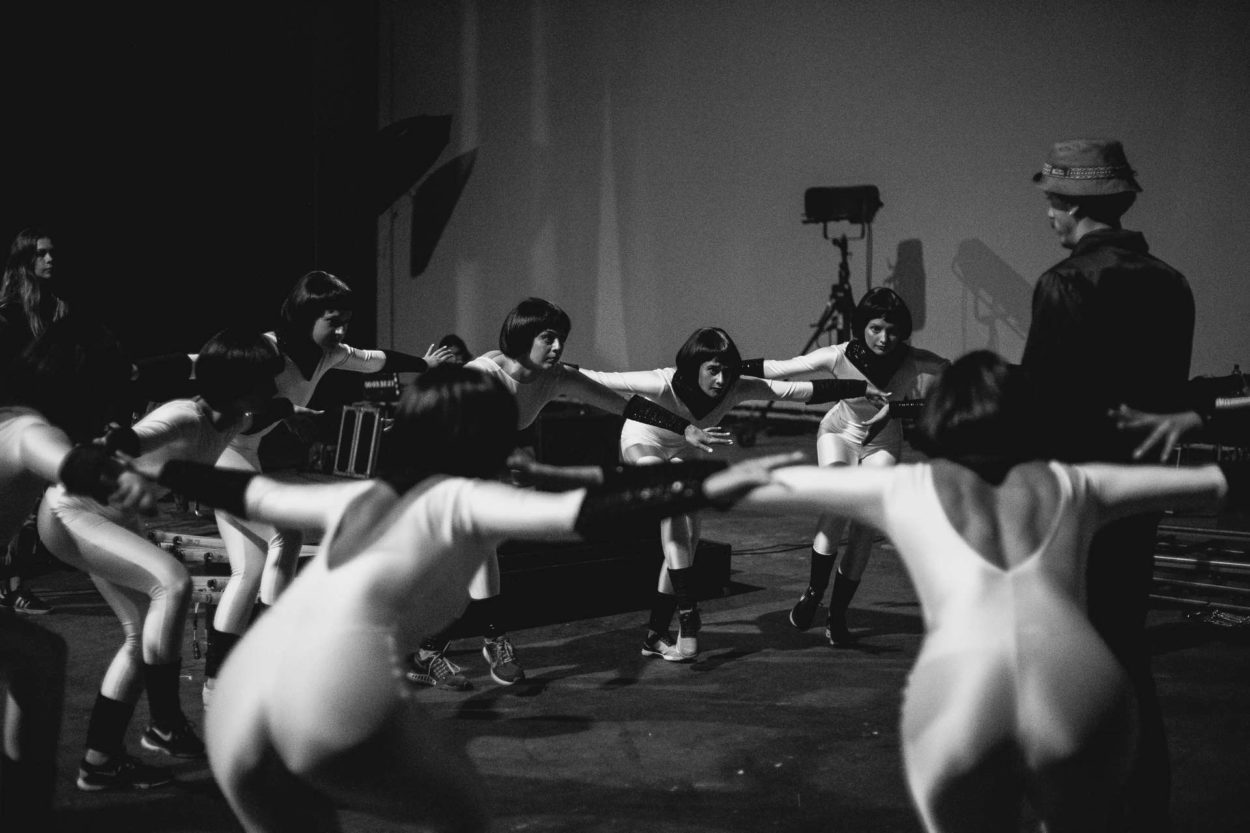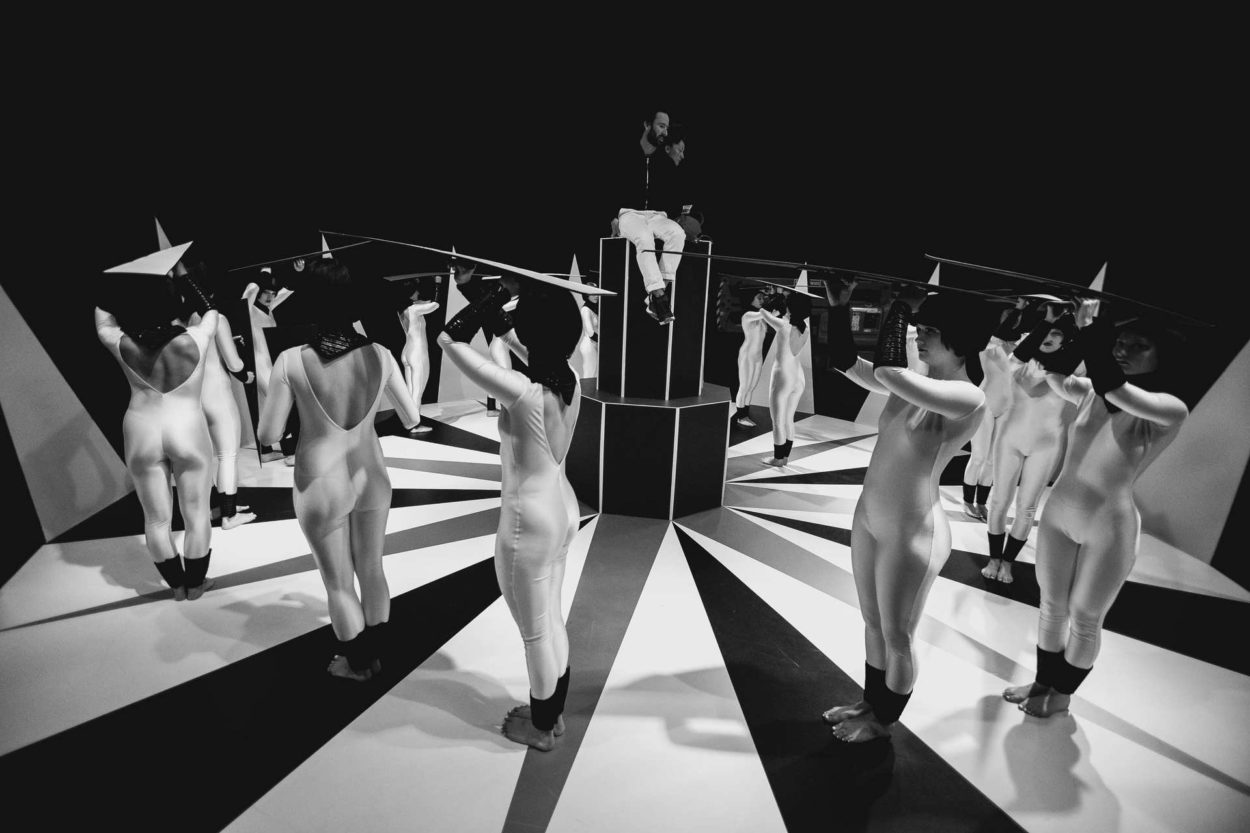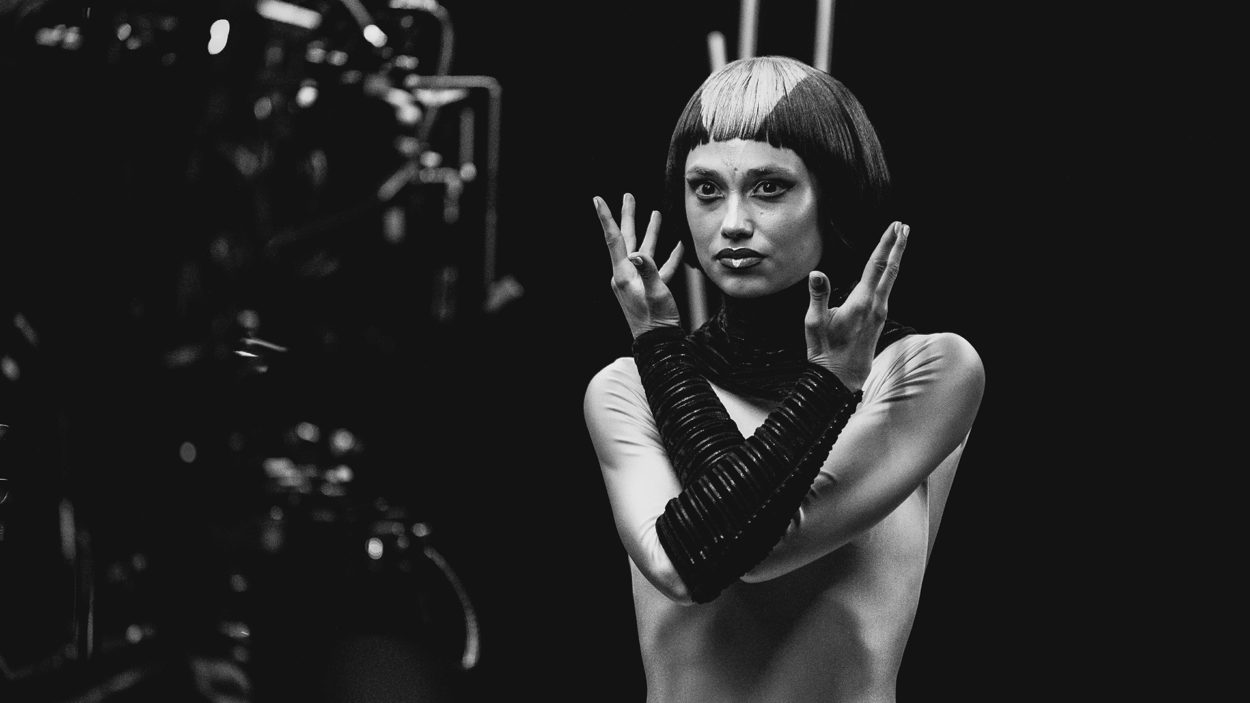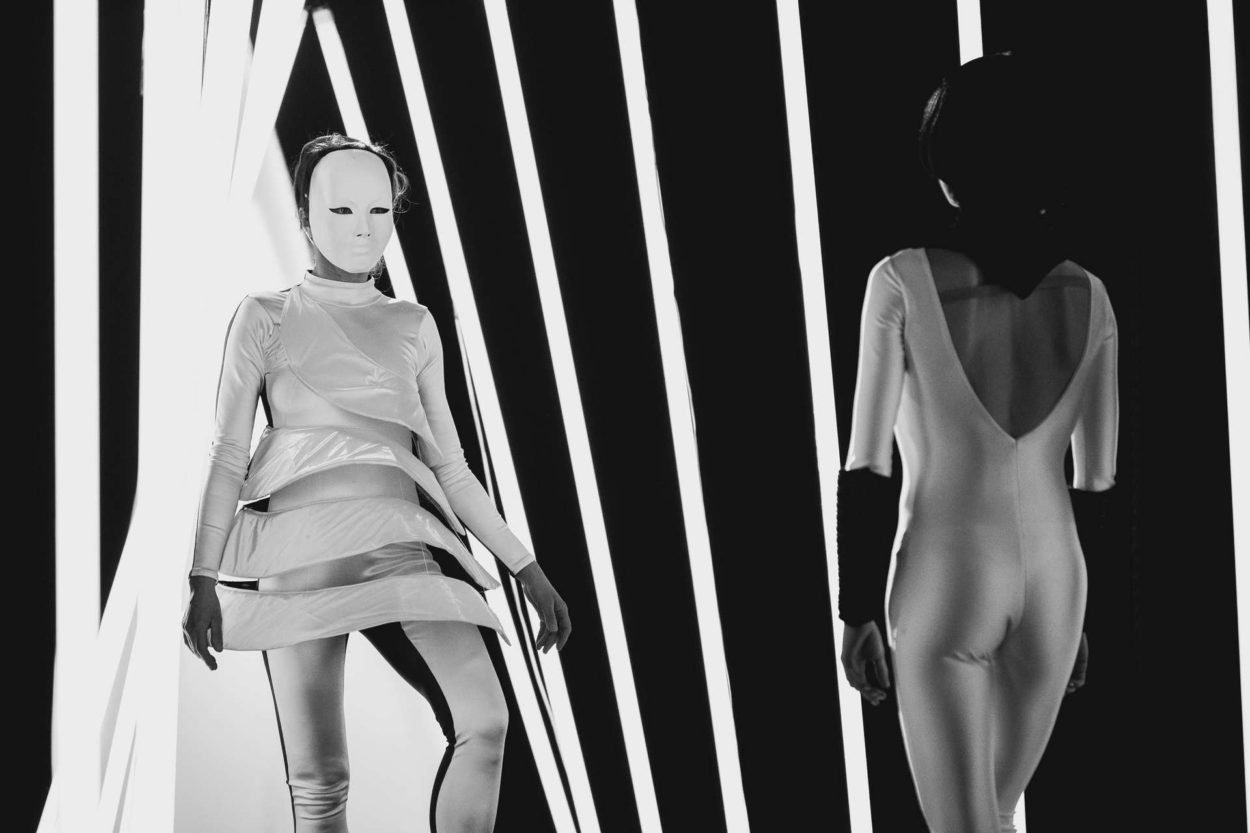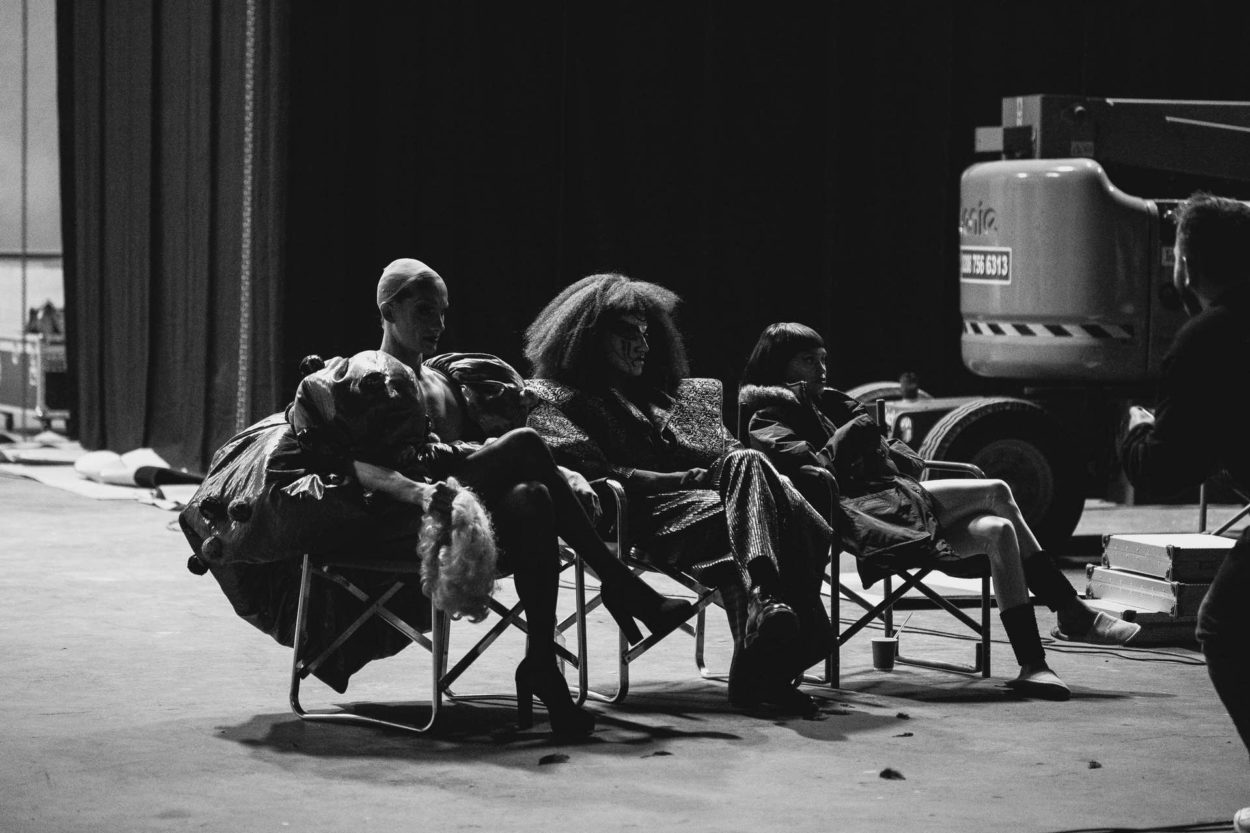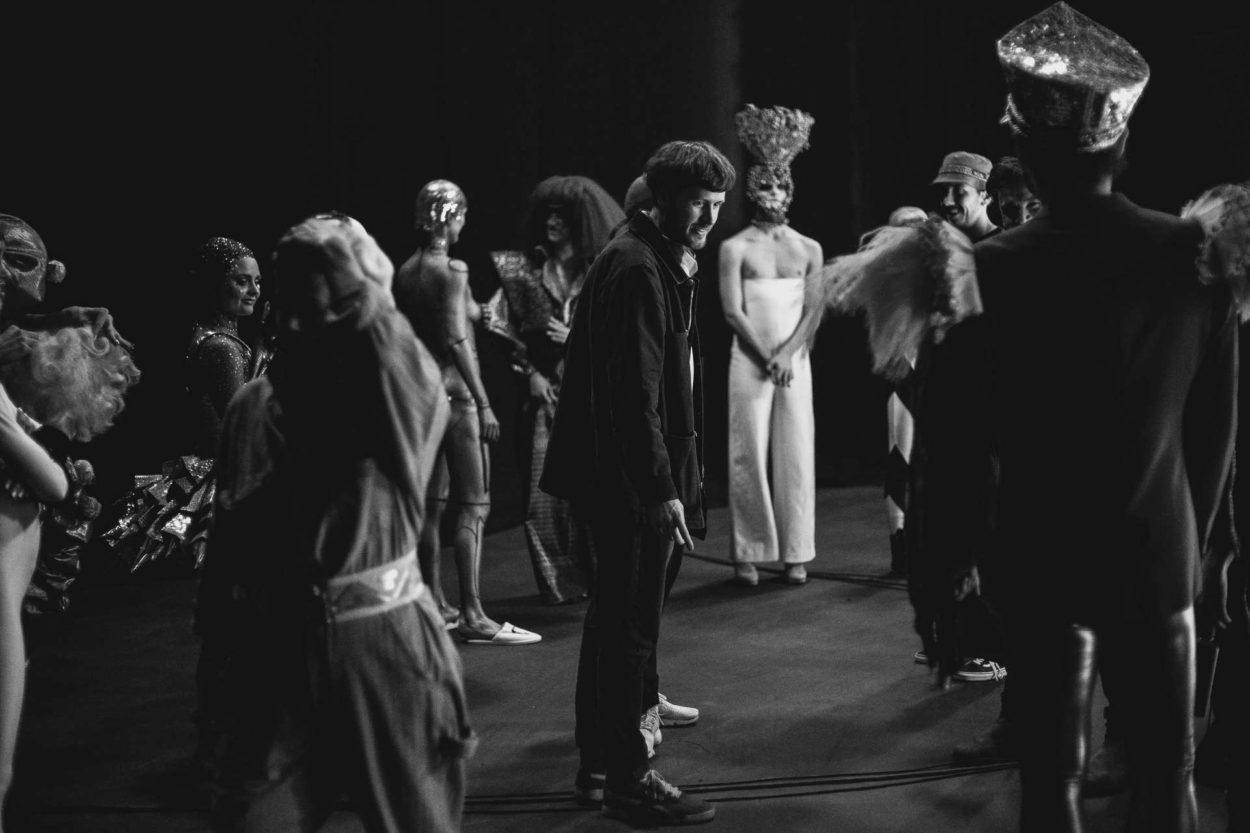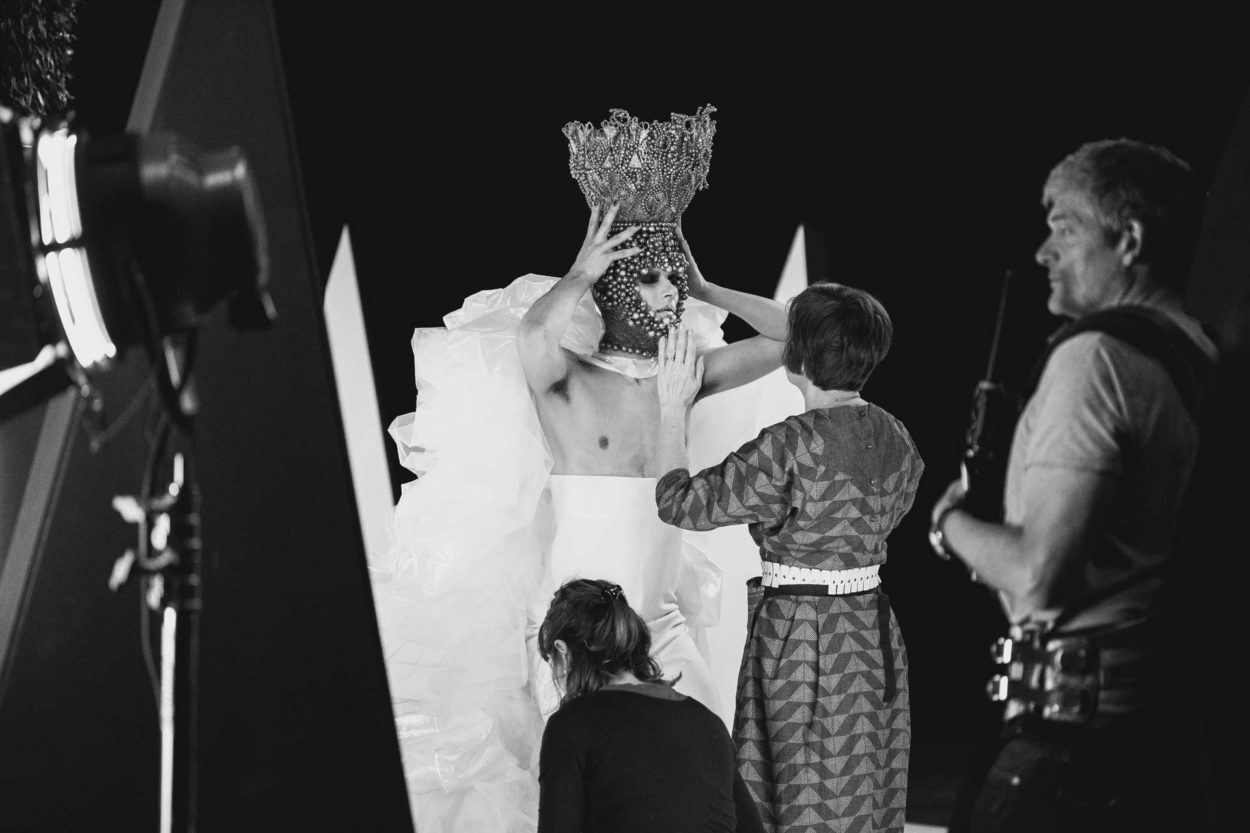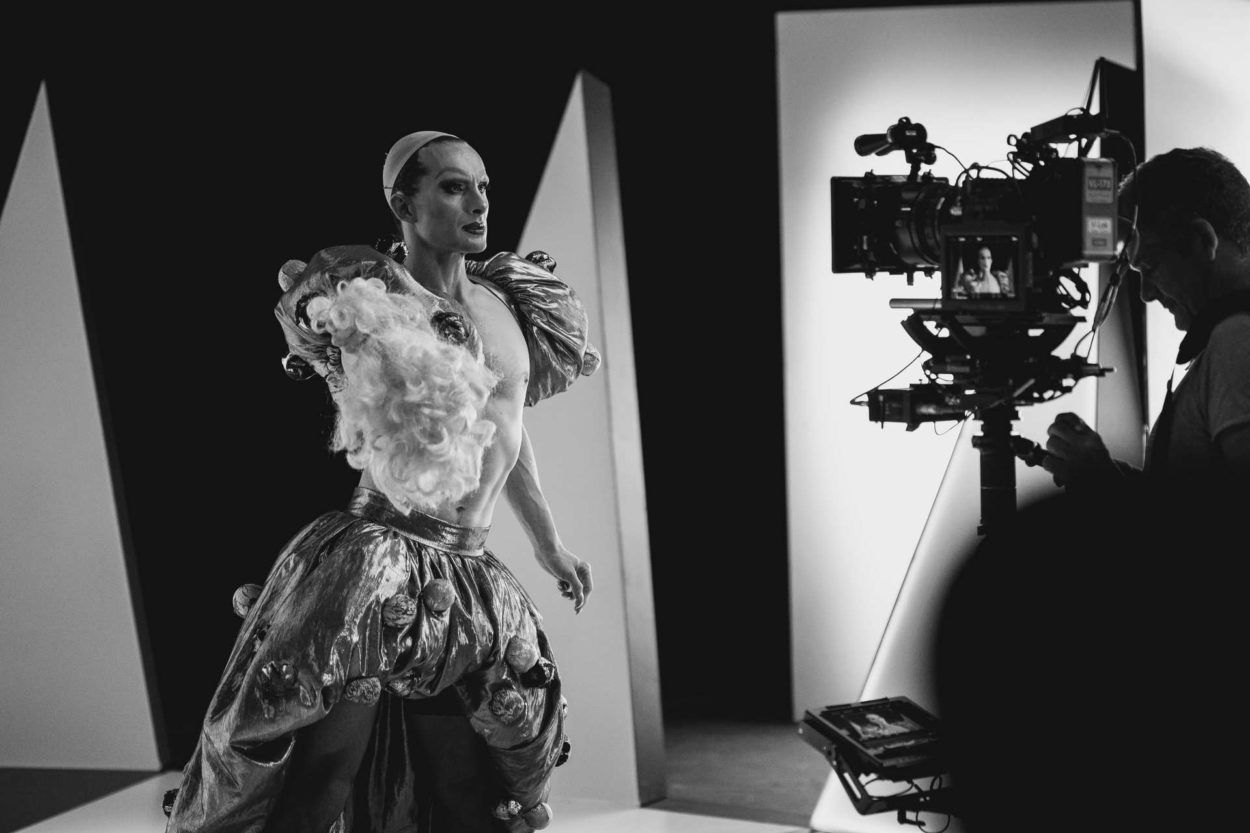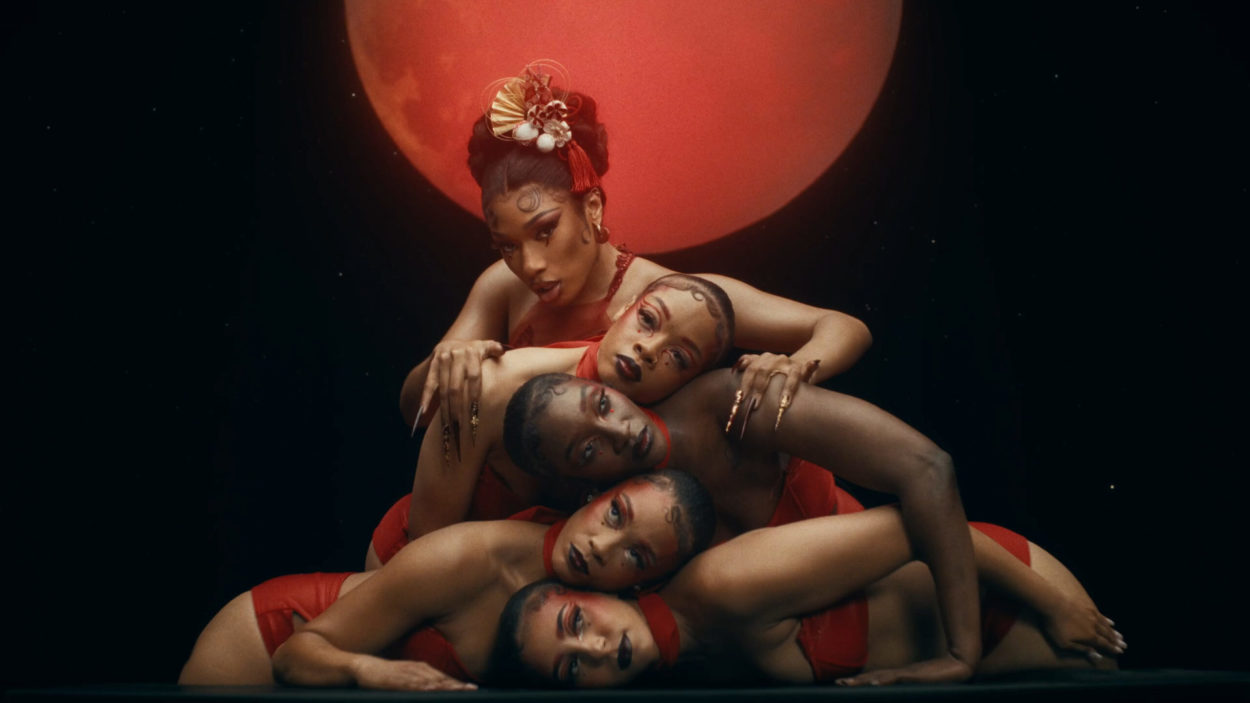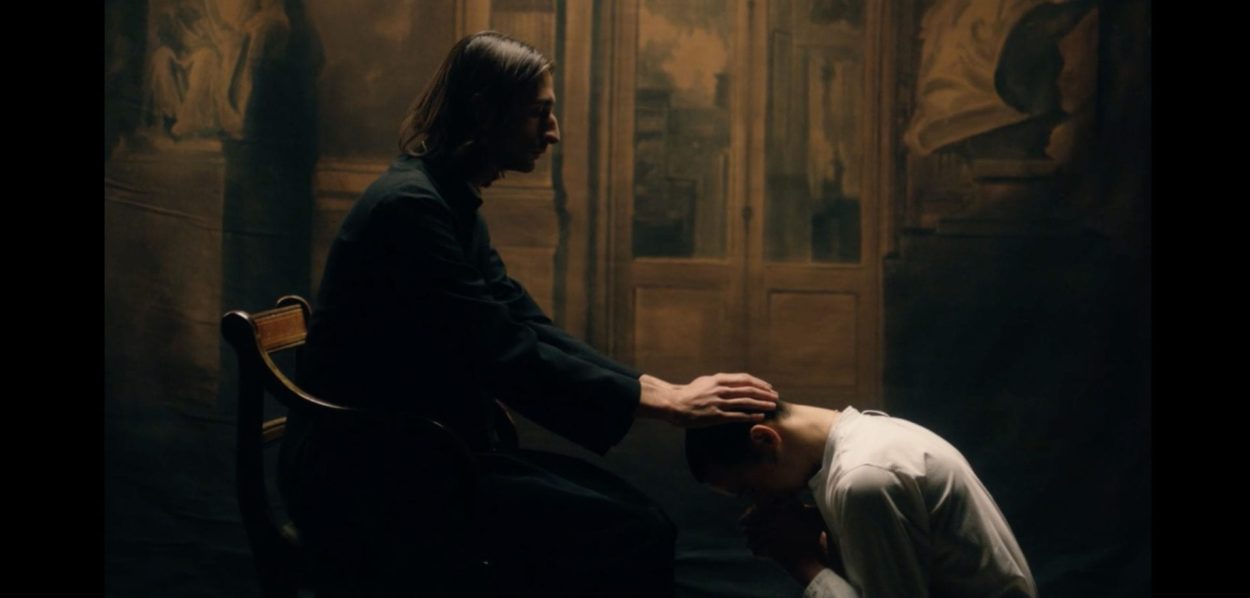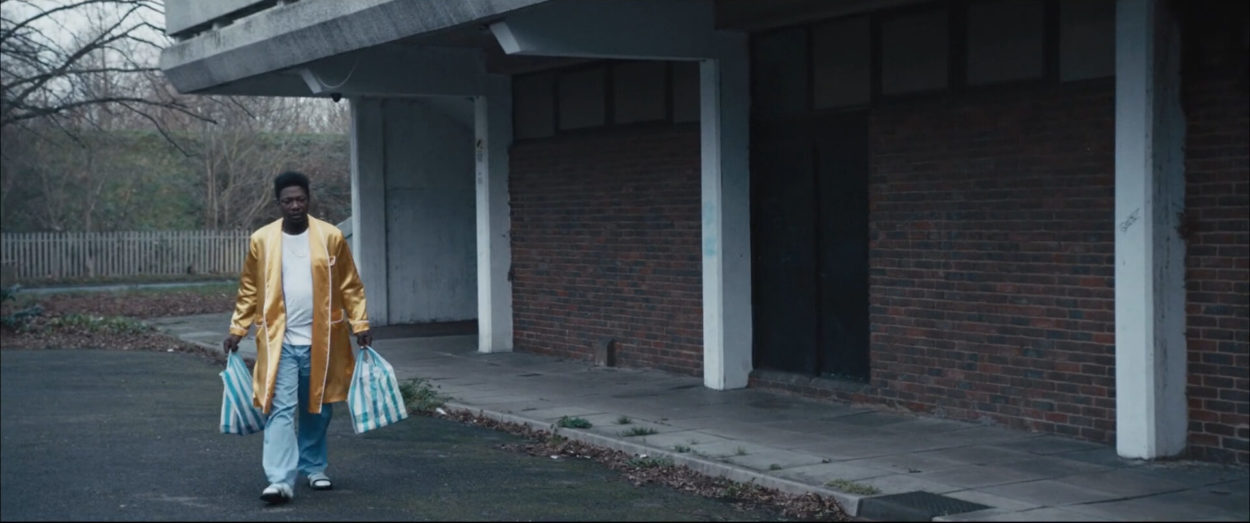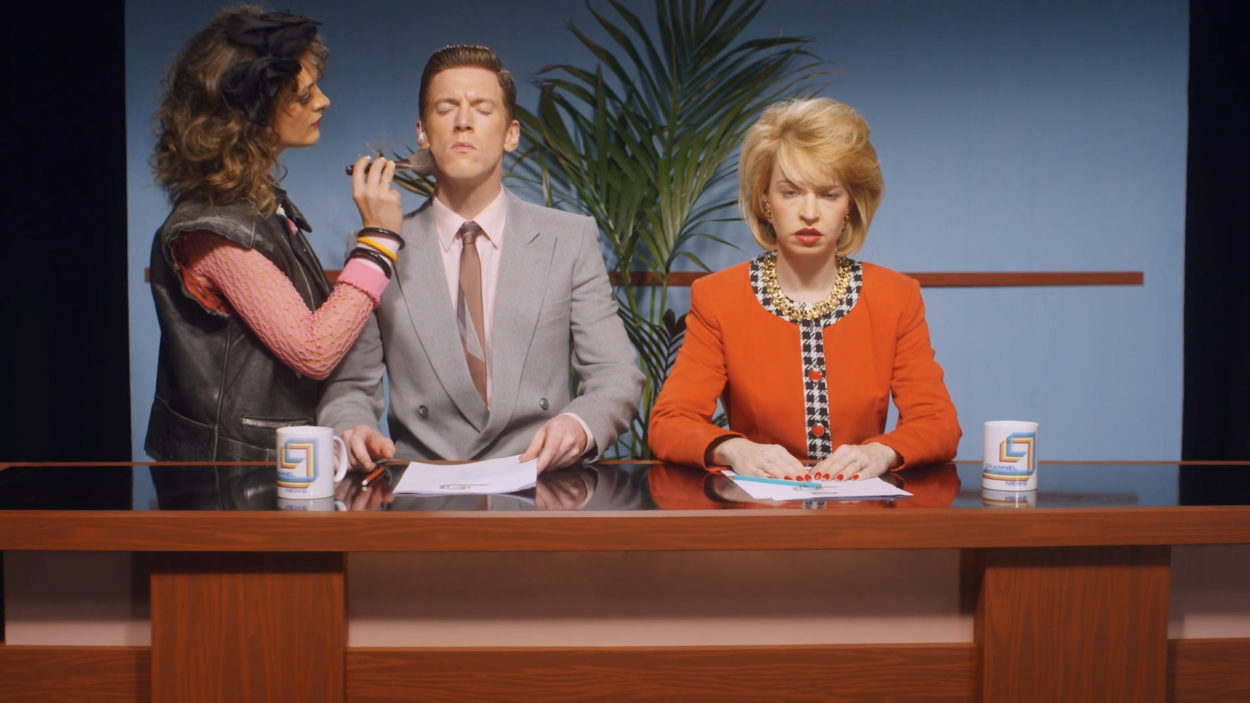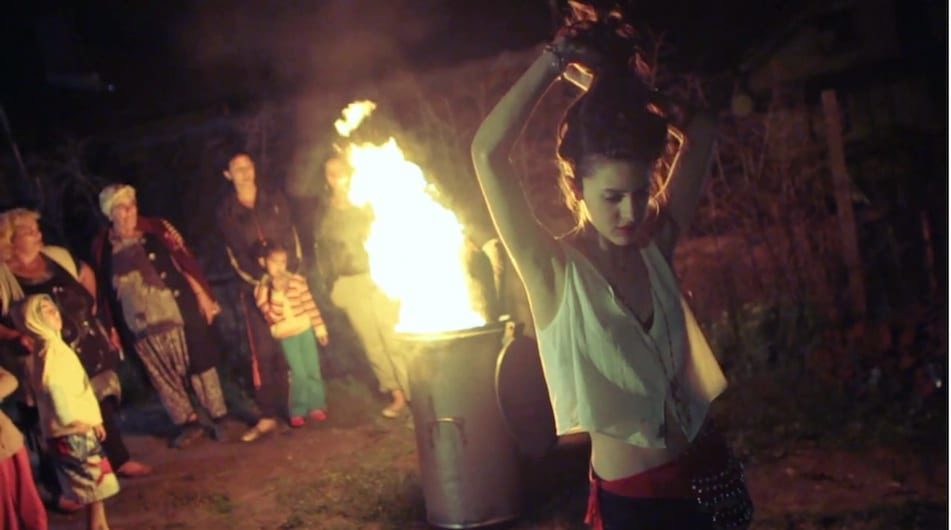Why did you choose this track – was choreography always a criteria of Bennie and the Jets and what was it about dance performance that appealed to you?
It was actually my friend and co-director Laura Brownhill who chose the track. Laura comes from the world of theatre and live event performance and so I think a lot of the themes in Elton and Bernie’s choreography brief felt quite relevant to what she’d done before, such as the choreography and the Metropolis reference. She devised the initial concept design of the set and the idea of it functioning like a human-sized carousel-cum-zoetrope.
I’ve always wanted to do a choreographed dance video, having been raised on a diet of Michael Jackson videos in the late 80s/90s, and so when Laura came to me with this idea I jumped at it. Bennie and the Jets has always been a favourite Elton song of mine and choreography just seemed like such a great match for the track’s unusual pace and rhythm.
Together, we came up with the narrative and the idea of exploring the genesis of Bennie and the Jets, Bennie and the Jets being the name of the fictional girl band upon which the song is based. Taking the song’s lyrics ‘weird and wonderful’ and the notion of ‘the future as if imagined from the past’ as key inspiration, we devised the concept of a retro-futuristic talent show in which Bennie is auditioning to find her backing band, i.e. the Jets.
Did you cast dancers from one company or was everyone individually chosen?
All but two of the dancers came through contacts of our choreographer Aaron Sillis and his dance company Sillis Movement. One of the great things about Aaron is that he has an amazing pool of dancers to draw from. The two non-Sillis Movement dancers were the compère on skates, who was a friend of Laura’s, and Jet, who was played by an incredible Parisian dancer called Fanny Sage.
The casting sessions were a definite highlight for us, we saw some incredible talent and it was really hard sometimes deciding who to go with. A really important factor for us was gender equality, so of the eight solo dancers we knew we had to have four girls and four boys.
Do tell us please how you pre-prepped and worked out the choreography and the sets.
Laura’s work in performance art often draws on the idea of complete spectacle, so the set, costume and choreography are all considered as one. The design for the set was the seed that instigated the overall vision for the piece and you can see the original maquette Laura designed in our winning video treatment here: https://bit.ly/2rEhhET. It’s based on the structure of a zoetrope, which is an early device that generates the illusion of motion through a sequence of images showing progressive phases of motion. This became the initial idea for a way in which to generate a unique choreographic style and movement.
The choreography for the solo dances in the contestants’ section were born out of the characters’ different personalities but also through the idea that the costumes could inform the movement. Each character was assigned a name based on a cosmic element – Rocket, Comet, Gynoid, Galaxy, Martian, Star, Luna and Jet. A description of the qualities that represented their personalities based on these cosmic elements was then given. And finally, a dance style that most fitted their personalities was assigned, so for example, Rocket incorporated elements of krumping, Comet voguing, Gynoid body popping, etc.
We wanted to encourage diversity in the dance styles to enhance the ‘weird and wonderful’ theme. The movement style of everyone was then refined over three rehearsal sessions with our choreographer Aaron Sillis and his movement director Pat Boguslawski. Each soloist was encouraged to offer their own interpretations of these characters, so a lot of what we see in the final film is the dancers own self-expression.
The final stage of choreography was our Busby Berkeley-inspired synchronised group dance. Aaron and Pat assembled a group of 16 girls from a dance college where Aaron teaches who were a similar build and height to our lead character Jet. Here the movement was developed by taking inspiration from the contemporary dance world as well as the Hollywood productions of Berkeley. We also added in sequences involving the dancers holding triangular props to create complex geometric patterns when viewed from above.
Were there certain limitations within the brief that affected your decisions?
We were challenged by the fact that we had to generate a complete narrative through the art of dance and movement to fulfil the choreography brief. The song isn’t short either, clocking in at just over five-minutes and there’s not much progression in it, it kind of just repeats itself, so we were very conscious of trying to keep things interesting and new. Therefore, it was essential we came up with a strong narrative and a clear motivation for the characters. You can split the video into four main sections: the solo dances, the final parade, the cloning section and the synchronised group dance sequence. The synchronised dance then has the added elements of the zoetrope effect and the triangular prop choreography added to the aerial shots.
Elton and Bernie had suggested in the original brief that it would be good if the video was shot in black and white as a nod to classic Hollywood. I immediately jumped at this as it was an opportunity to shoot in a way I hadn’t before. A lot of my work is defined by its rich colour and so I was drawn to the challenge of trying to make a video feel colourful and vibrant using only a monochrome palate. And for the tech geeks out there we actually shot natively in black and white on a Red Monochrome camera, which gave us beautiful results.
The black and white aesthetic also provided a limitation for our costume designer, Rosa Dias, who had to work harder with form, shape and texture to create unique and distinguished looks for each character.
In fact, the sets although futuristic are evocative of perhaps old Hollywood sets. Please tell us how these evolved and were there any references you drew on?
As mentioned before, a key concept for us right from the start was ‘the future as if imagined from the past’ so although it’s set in the future we wanted everything to still feel quite retro and lo-fi. One of the finest examples of this aesthetic is found in Fritz Lang’s 1927 classic Metropolis, which was a major early influence on us.
The set design took initial form from the structure of a zoetrope and the idea of a 360-degree performance area was inspired by the ritual and ceremony of the carousel death scene in the 1970s sci-fi film Logan’s Run. Aesthetically, we drew inspiration from a lot of constructivist and minimalist design as well as art deco and Bauhaus architecture. Also, the 1970 film version of Oskar Schlemmer’s Triadic Ballet was a big influence.
Geometry was at the focus of the graphics for the floor design and was initially inspired by a star-shaped stage Laura had seen Elton performing on during his Red Piano Tour. The floor was divided into sixteen segments that each connected to one of the triangular lightboxes that surrounded the edge of the set, these in turn corresponded to each of the 16 clone dancers. This highly symmetrical and geometric set design was devised for maximum impact when seen from above during the Busby Berkeley-inspired finale.
Was everything shot in a massive studio? Was the shoot quite challenging?
We shot for two days in Studio 5 at Black Island Studios, which is their largest studio. The set itself wasn’t that big – about 8-metres in diameter – but we needed a studio with a really high roof in order to achieve the overhead aerial shots that were essential in capturing the end synchronised dance sequence. Studio 5 was the only studio that offered us that height.
The main challenge, as ever, was time. We had a huge amount to shoot in our two days – 26 dancers, multiple setups on various rigs – and there was no room in the budget to go into overtime. Luckily, we had a fantastic 1st AD by the name of Jerome Franc who made sure we got everything we needed and we miraculously finished on time on both days. Thank you Jerome!
Is Bennie and the Jets playing endlessly on your brain?
Yes. Help me.
What was the highlight of going to Cannes?
There were so many highlights in Cannes but meeting the man himself for the first time has got to be the main one. The day before the official screening, we presented the films to him and Bernie in private at Elton’s beautiful villa on a hilltop overlooking Nice. It was such an amazing moment, we were made to feel so welcome and everyone was so appreciative of what we’d done. And, of course, he loved them, which was a massive relief!
Also, getting to see the other two videos for the first time, Max’s Tiny Dancer and Majid’s Rocket Man, which I thought were both fantastic and totally unique in their own way.
Anything else you’d like to share?
There’s a bit of a hidden Easter egg in the video that I’m not sure anyone has spotted yet and it happens in the zoetrope effect shots during the end synchronised dance sequence. The positions the dancers are holding in front of the triangular lightboxes are human alphabet letters B-E-N-N-I-E-&-T-H-E-J-E-T-S, which neatly spell out the song title Bennie and the Jets!
We’d also just like to take the opportunity to thank our amazing cast and crew, everyone who worked on this was nothing short of amazing and pulled out all the stops to help us achieve our vision – our choreographer Aaron Sillis, costume designer Rosa Dias, art director Georgia Shelton, DOP Marc Gómez del Moral, make-up artists Marta and Monika, Editor Chris Roebuck, all the guys involved in post – Ruffian Post, Electric Theatre Collective, Wave Studios – and last but not least our fantastic producer Tess Mitchell who truly worked wonders to make it all happen – we love you Tess!
